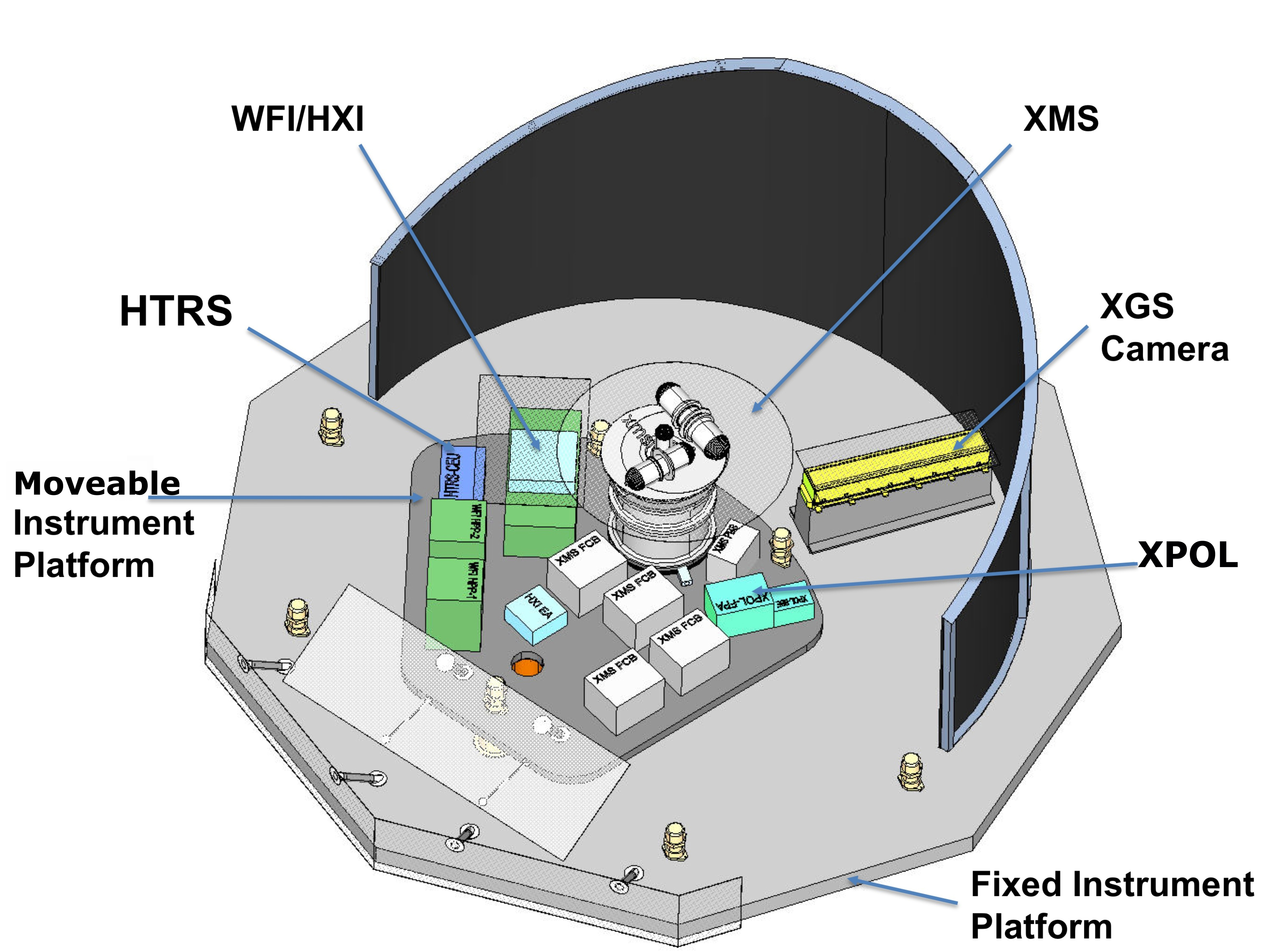 |
Goddard Space
Flight Center NASA > GSFC > Astrophysics Science Division > IXO |
|

You are here: Technology» Instrument Model»
The module contains:
In IXO, the X-ray beam will be picked up by six different detectors located on two instrument platforms—the Moveable Instrument Platform (MIP) and the Fixed Instrument Platform (FIP). Their aim is to provide complementary spectroscopy, imaging, timing, and polarimetry data on cosmic X-ray sources to help disentangle the physical processes occurring in them.
Astrophysical data will be collected using one of the four MIP-mounted instruments at a time, in parallel with the XGS. In general, most observations will use one instrument only. XGS observations will generally also include a simultaneous MIP-mounted instrument observation to extend the X-ray bandpass of the observations to E > 1 keV. The way the MIP-mounted instruments are used together is by performing distinct observations of the same object with alternate instruments in a way specified by an observer, with the intention of achieving a specific science goal.

Instrument Module. Credit: NASA. Click on the instrument name or location to read more about the instrument.
Unlike optical light, X-rays cannot be focused at normal incidence because the radiation would be absorbed in the mirror. Instead, the mirror uses grazing incidence with very low angles of incidence. As a result, X-ray telescopes resemble cylindrical shells, with their inner surface being the reflecting surface. Since the grazing angle is a function inversely proportional to photon energy, the higher-energy X-rays require smaller grazing angles to be focused (e.g., 1—2 degrees). This implies longer focal lengths as the photon energy increases, thus making X-ray telescopes difficult to build if focusing of energies higher than a few keV is desired.
Also, because of the need for low grazing angles, an X-ray telescope cannot be folded, as can be done with a visible-light telescopes. For that reason, IXO uses the Moveable Instrument Platform that holds instruments and rotates them into the focus. The MIP consists of a honeycomb panel with a redundant motorized rotation stage. It rotates through about 140 degrees and has four stops—one stop for each instrument (including the WFI/HXI pair).
The following four IXO instruments—XMS, WFI/HXI, HTRS, and XPol—are placed on the Moveable Instrument Platform. Among them, the WFI/HXI pair, where the HXI detector is placed aligned on top of the WFI and receives high energy X-rays that have passed through the WFI´s focal plane. Thus, the WFI and HXI form a pair of detectors that share the same focal plane and rotate simultaneously. See WFI/HXI.
The four MIP instruments each have their own electronics boxes, which need to be in close proximity. These boxes process the analog signals from the instruments and convert them to digital ones. Once the analog signals have been converted, the digital data are sent to additional boxes on the bottom side of the FIP, and from there down to data recorders in the spacecraft bus.
The fifth instrument—XGS is located on the Fixed Instrument Platform and operates continuously, refer to the XGS page.